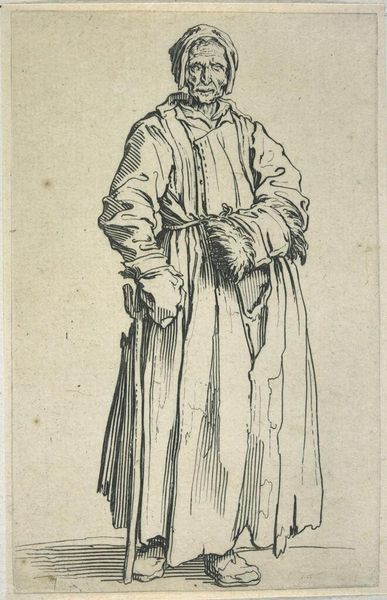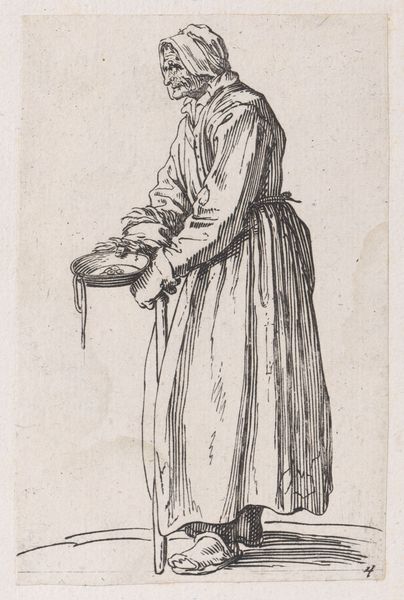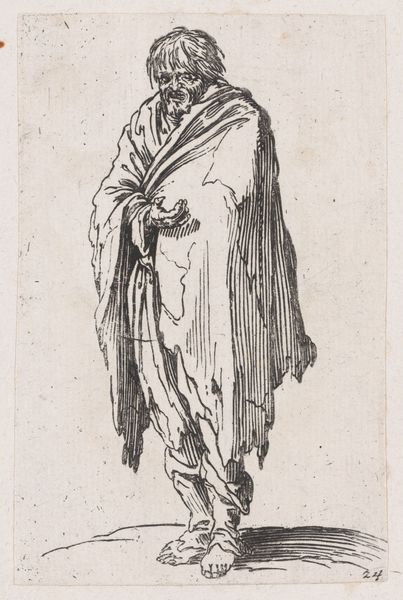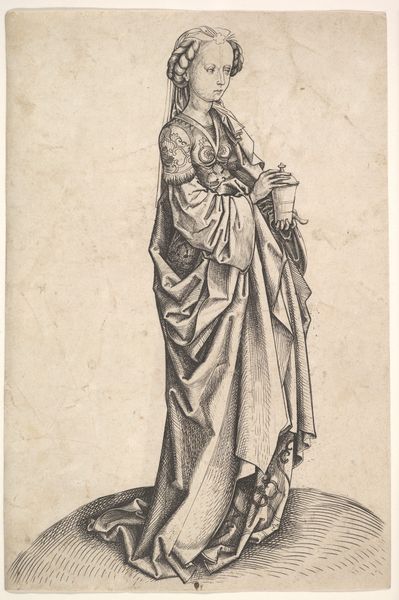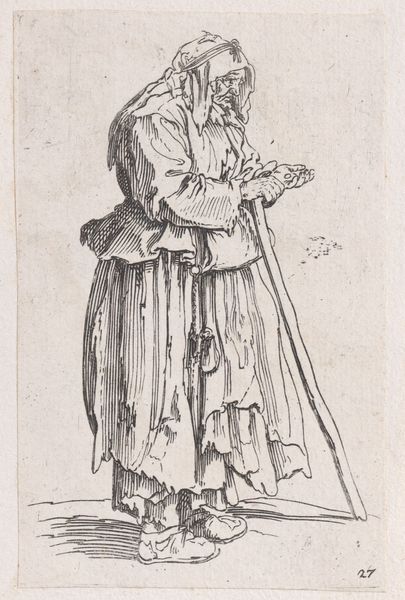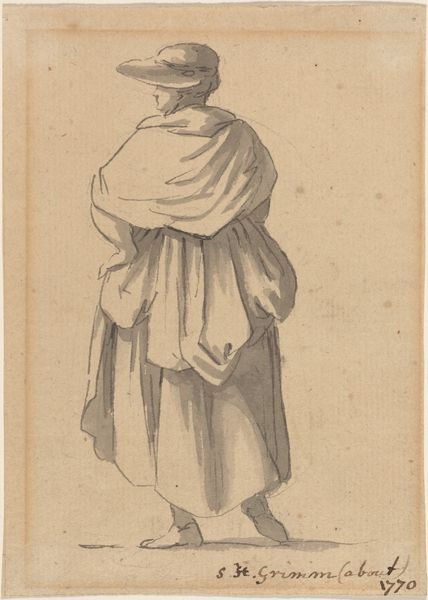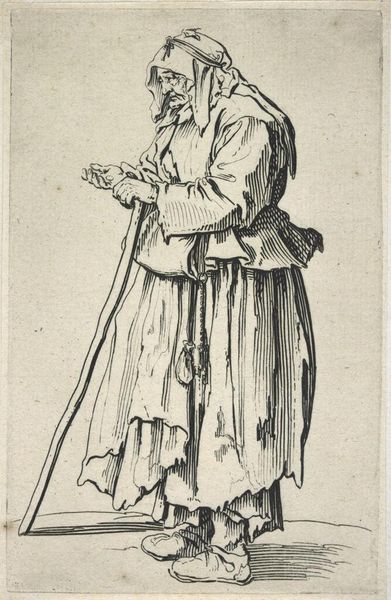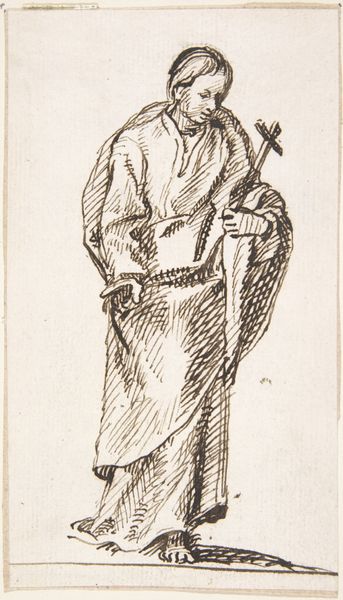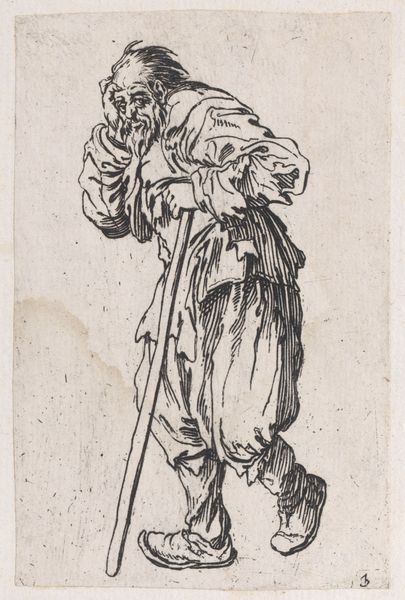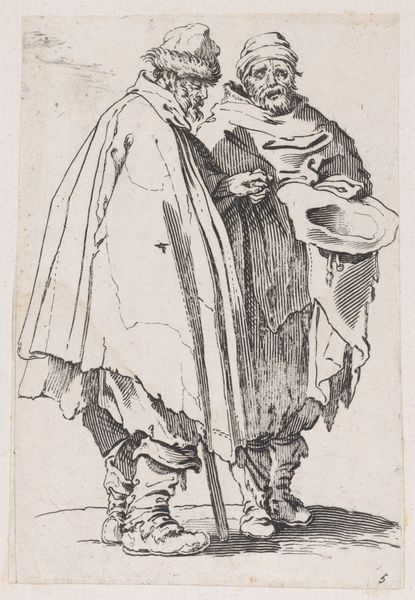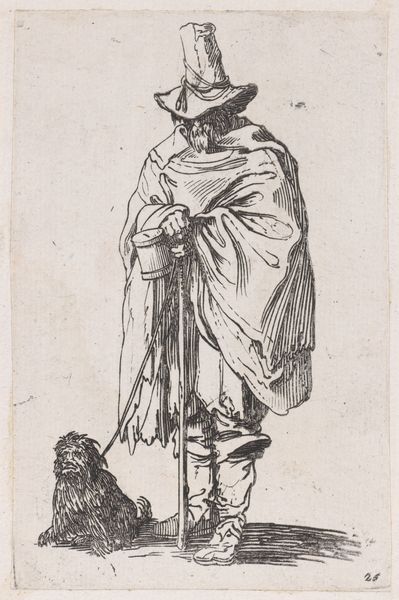
Reverse Copy of Le Mendiant aux Béquilles Coiffée d'un Chapeau et Vu de Dos (The Beggar with Crutches Wearing a Hat and Viewed from Behind), from Les Gueux suite appelée aussi Les Mendiants, Les Baroni, ou Les Barons (The Beggars, also called the Barons) 1625 - 1700
0:00
0:00
drawing, print, engraving
#
portrait
#
drawing
#
baroque
# print
#
figuration
#
genre-painting
#
engraving
#
realism
Dimensions: Sheet: 5 1/2 x 3 9/16 in. (14 x 9 cm) trimmed and backed
Copyright: Public Domain
Curator: The weight of this image hits you, doesn't it? What strikes you first about this engraving, a work entitled "Reverse Copy of Le Mendiant aux Béquilles Coiffée d'un Chapeau et Vu de Dos (The Beggar with Crutches Wearing a Hat and Viewed from Behind), from Les Gueux suite appelée aussi Les Mendiants, Les Baroni, ou Les Barons (The Beggars, also called the Barons)" and thought to originate sometime between 1625 and 1700. It comes to us from an anonymous engraver. Editor: The sheer starkness of it, I think. The figure seems stripped bare, emotionally as well as materially. Those deep, etched lines really convey the rawness of poverty. It almost feels confrontational. Curator: This print belongs to a broader visual culture, quite popular at the time, that depicted the lives of beggars and the disenfranchised. You see it playing out across Europe, this near obsession with the social margins. Why do you think there was this focus on marginalized figures? Editor: It is definitely an engagement with pre-existing traditions in European art. These were types; these were meant to trigger responses, in much the same way that a flag means something different, that it shows an intention to communicate meaning quickly and to those initiated with cultural traditions of reading such images. Think about the iconography of suffering; it runs deep within us. This image becomes part of that cultural well, so to speak. Curator: Precisely. Think about how artists used such images to elicit responses, and to prompt both pity and fear in audiences, particularly the wealthy, the so-called "haves" who could afford the artworks portraying "have nots". I'd say it speaks volumes about the anxieties of social upheaval bubbling just beneath the surface in those times. And furthermore, anxieties for a life perhaps gone wrong? Editor: Definitely, those gaunt features... they also represent something primordial— a reminder of our mortality, of fate's cruel hand. It seems, that despite its simplicity of means—just line on paper, right?—it manages to reach something timeless about the human condition. What an engraving. Curator: A profound point. The image, displayed in our collection in New York, clearly resonates far beyond its historical origins, I'd say. Editor: It does make you reflect on just what has changed… or hasn’t.
Comments
No comments
Be the first to comment and join the conversation on the ultimate creative platform.
